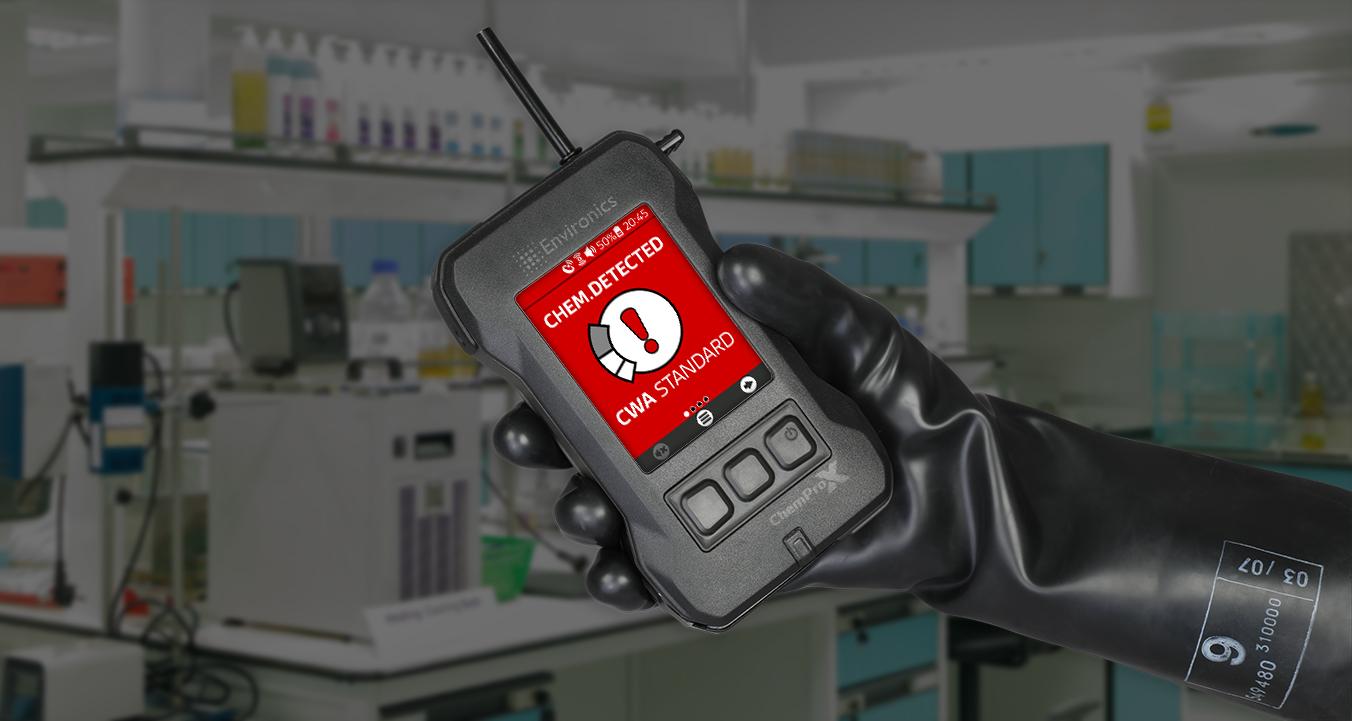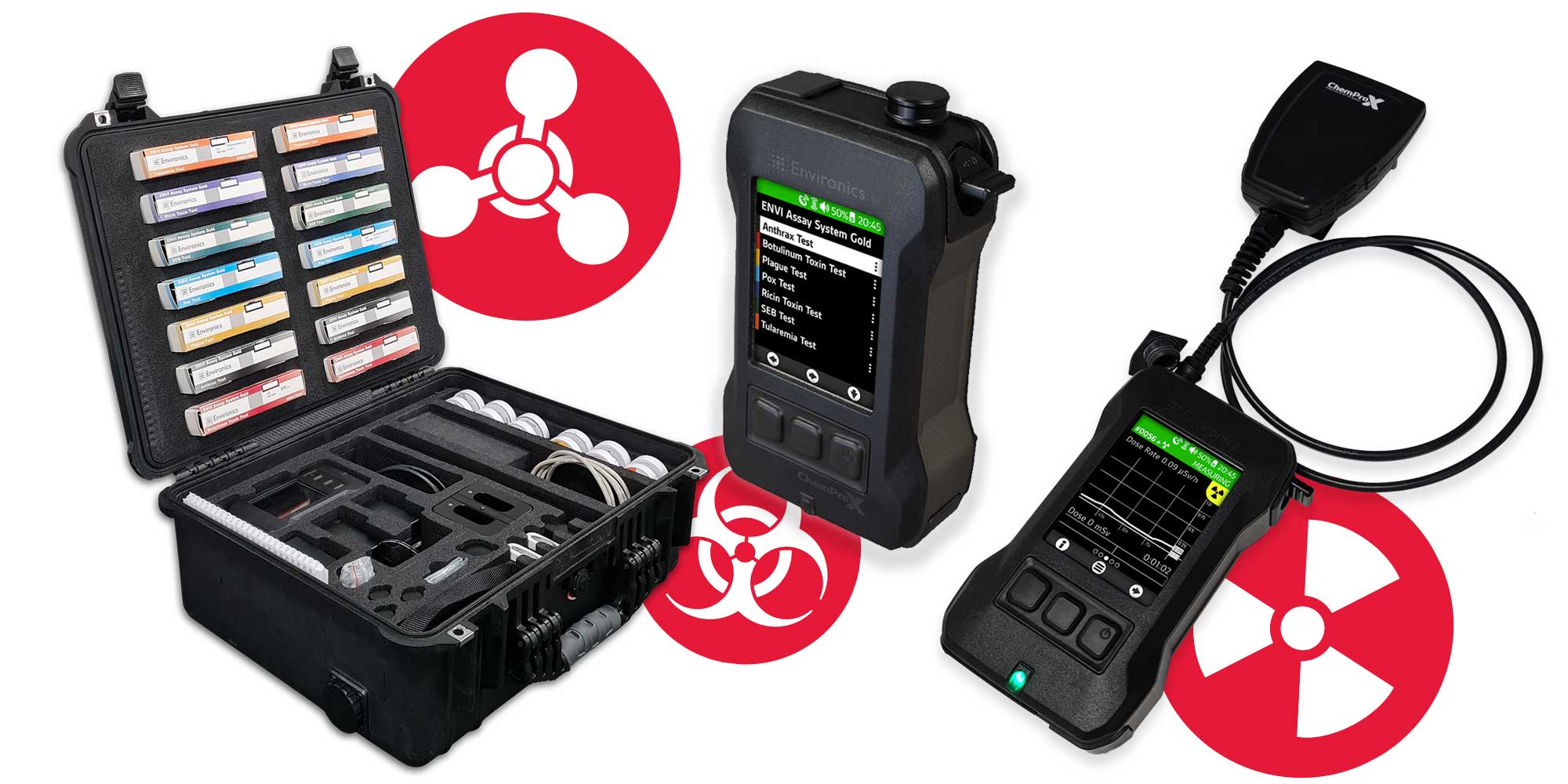“ChemProX, a CBRN Detector Against Multiple Threats in Crises Management Missions – Part 1” listed some potential CBRN related threats and risks to be prepared against, in crises management missions. Part 2 will describe an example where ChemProX CBRN Kit may need to be used.
The next scenario can serve as an exercise example for preparing and training units for deployment. Do not focus on one agent only (C, B or R[N]), when you can see all of them effortlessly.
Do not focus on one agent only (C, B or R[N]), when you can see all of them effortlessly.
When In a Crisis Management Mission, Prepare for the Worst and Hope for the Best…
The new International Forces of Crises Management (IFCM) mission operation area’s (OA) state has signed and ratified both Chemical and Biological Weapons Conventions. Before the crises there was no known official production and offensive research.
Due to the long-lasting regional crises and extremist ethnic and regional groups, there is a suspicion that local research laboratories are able to handle and potentially manufacture biological warfare suitable agents.
There is also a risk that infectious agents can be used against other groups or mission personnel. The same groups have also skills and will to manufacture and use toxic chemicals for their purposes.
White Powder on the Desk
The local governmental office received a postal package which dispersed white powder on two office workers. They didn’t get panic or get any further attention to that, because they thought that this was some “funny prank” from their colleagues. They didn’t even have any knowledge of the potential risks of powder letters, or any similar type of risks, except for explosives. They simply cleaned the room as normal procedure.
Approximately four days after the event, the same two employees started to feel sick experiencing blurred vision and they both went to the local hospital. At the hospital, one of them lost consciousness, stopped breathing, and died. Another survived, just accidently, when the doctor ordered antibiotic as “a normal medicine for all cases”.
Traces that Led to the Original Source
This event didn’t get any attention from locals or hospital due to the COVID variant “Omega”, until the IFCM Forces got an anonymous tip that led to a location of a possible source being an illicit laboratory.
The IFCM’s Force Protection (FP) were first asked to check the address for suspicious criminal activity. The location was a local warehouse that contained — what appeared to be — some kind of production capability in addition to storage facilities. Not all rooms fitments and equipment look familiar to them. One of the rooms layouts gave them flashbacks from school time and chemistry lectures. They didn’t continue surveying the place after this “chemistry classroom” when their body worn chemical detector — ChemProX — turned red and instructed them to mask up. The IFCM CBRN Detachment gave this detector to FP, just in case, for FP safety and also for collecting chemical background information.
Confirm or Deny More Than the Potential Biological Threat
After the FP’s site survey task report, the IFCM’s HQ ordered the CBRN Detachment (CBRND) to conduct a CBRN site survey mission to that building with FP.
Their task was to confirm/deny the presence of a CBRN threat and to take operational samples for further analyses and for a special mission.
Intelligence provided more information that the area belongs to a minority ethnic group’s supervision. The CBRND’s reconnaissance team (RT) started their tasks after the FP had secured and protected the scene.
First, the RT established the Incident Command Post (ICP) and decontamination point (DP) before the team entered the building in with proper PPE.
The RT executed basic entering procedures for collecting information and for their own safety. They operated as standard procedure for measuring radiation, chemical, O2 and LEL. They used ChemProX chemical detector with Radiation Detection Module (RDM) creating real-time communication connection to ICP Command and Control UI where Incident Commander (IC) could follow their movements and chemical and radiation changes.
CBRN Threat Survey
The team found the “chemistry classroom” on the second floor.
Before opening the door, they knew that inside the room there are chemicals, due to proper entering procedures. The chemicals were not any CWA or known TIC, because the detector retrieved “Chemical Detected” in both different detection modes.

ChemProX handheld chemical detector features 2 detection modes interchangeable without leaving the contaminated area. These detection modes are CWA and TIC.
At first glance, the room really looked like a chemistry room, but a trained eye could see the equipment was obviously intended to be used for something else. The team measured the radiation to exclude it, and made chemical surveys to find out the source for the chemical alarm. This pointed to a leaking container without any markings or labels. They checked the chemical with colorimetric tubes but without getting positive results. An operational sample was taken for analysis in the field laboratory.
The RT found from the first room several types of laboratory bottles with slurry paste and potential raw culture. There was laboratory material like freezers, liquids, hood, shakers and filtration equipment. In the refrigerator they found a petri dish with some biological growth which displayed mucoidal colony morphology. This was a biological laboratory and with potential for bacteria research. They made floor plans, took pictures and videos from the location no. 1. They made the first level detection and identification of potential biological agents using ENVI Assay fluorescence test tripes. They had with them a basic set for bacterial testing for Plague, Anthrax and Tularemia. The Anthrax test accused positive from the petri dish, and the others were negative. All the test results with time-location were saved to ChemProX Envi assay system memory. They took operational samples from the location no. 1.

Bacillus anthracis, gram-positive spore forming bacteria which causes anthrax and is used as biological weapon.
Collect Information to Support CBRN Detection & Identification
From the second smaller room they found seeds, filtration equipment, chemical bottles, face masks, a mortar with pestle, a silica jar, and other laboratory tools. All of these indicated right away that this room has been used for ricin toxins extraction and isolation. The RT made spotted locations actions by SOP and confirmed their assumptions were correct when they used ENVI Assay Ricin Toxin test. After this room they continued the survey and they didn’t find any other toxic agents, only other evidence supporting the development and possible use of biological agents – Ricin toxin and Anthrax.
After the survey, the RT went through the decontamination point. They made a quick wrap-up on scene to check that they have all the needed information for task report. The IC used C&C and TUI for planning and reporting the team’s movement, alarms, and hazard and perimeter areas. The RT the made first report in HQ to confirm the Biological threat. After finalizing the task report and task debriefing, it was ordered to conduct the the special Bio sampling.
ChemProX CBRN Kit – A Multi-tool Kit for Multi-threats
From Chemical Detector to CBRN Detector
New generation chemical detector ChemProX has already been selected for various crises management situations by key players, as the “tool” on site.

ChemProX CBRN Kit is a comprehensive set that expands ChemProX next generation handheld chemical detector for full CBRN threat detection. The CBRN kit turns the ChemProX chemical detector into a CBRN detector.
Now the standard chemical detection performance in increased to the next level. With ChemProX CBRN Kit the operators can add simultaneous radiation detection and survey performance as a plug ’n’ play module. The kit also contains seven different biological agent’s identification rapid-test for field level analyses. Long story short, all needed CBRN capabilities and performance are now comprised into one rugged case ready to for field deployment.
Training Manager Toni Leikas (CPT-ret) served in European Union Battle Group’s CBRN Detachment.

Leave a Reply